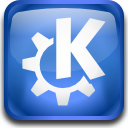
 | Working With the Kate MDI |
| Prev | The Fundamentals | Next |
Window, View, Document, Frame, Editor... What are they all in the terminology of Kate, and how do you get the most out of it? This chapter will explain all of that, and even more.
The Kate Main Window is a standard KDE application window, with the addition of side bars containing tool views. It has a menubar with all the common menus, and some more, and a toolbar providing access to commonly used commands.
The most important part of the window is the editing area, by default displaying a single text editor component, in which you can work with your documents.
The docking capabilities of the window is used for the tool windows:
And possibly other tool views, for example provided by plugins.
Tool views can be positioned in any sidebar, to move a tool right click its sidebar button and select from the mouse button menu
A tool view can be marked as persistent in the mouse button menu for its sidebar button. The sidebar can contain more tools at one time so that when a tool is persistant other tools can be shown simultaneously.
Kate is capable of having more than one document open at the same time, and also of splitting the editing area into any number of frames, similar to how for example Konqueror or the popular emacs text editor works. This way you can view several documents at the same time, or more instances of the same document, handy for example if your document contains definitions in the top that you want to see often for reference. Or you could view a program source header in one frame, while editing the implementation file in another.
When a document is available in more than one editor, changes made in one editor will immediately be reflected in the others as well. This includes changing the text as well as selecting text. Search operations or cursor movement is only reflected in the current editor.
It is currently not possible to have more instances of the same document open in the sense that one instance will be edited while the other will not.
When splitting an editor into two frames, it is divided into two equally sized frames, both displaying the current document of that editor. The new frame will be at the bottom (in the case of a horizontal split) or at the right (for a vertical split). The new frame gets the focus, which is visualized by the blinking cursor bar in the focused frame.
The documents list displays a list of all documents currently open in Kate. Modified files will have a small floppy disk icon on their left to indicate that state.
By default, the Documents list appears in , which displays the folder structure surrounding all currently open documents. Also available is , which displays a simple list of all open documents. You can switch modes by right-clicking on the list and selecting from the menu.
If two or more files with the same name (located in different folders) are open in , the names of the second will be prepended “(2)” and so on. The tool-tip for the file will display its full name including the path, allowing you to choose the desired one.
To display a document in the currently active frame, click the document name in the list.
You can sort the list in a few different ways by rightclicking the list and selecting from the menu. The options are
Lists the documents in the order of opening
Lists the documents alphabetically by their name.
Lists the documents alphabetically by the path to them.
The document list will per default visualize your history by shading the entries for the most recent documents with a background color. If the document was edited, an extra color is blended in. The most recent document has the strongest color, so that you can easily find the documents you are working on. This feature can be disabled in the Documents page of the configuration dialog.
The default location of the document list in the Kate window is to the left of the editing area.
The built in Terminal Emulator is a copy of the KDE Konsole terminal application, for your convenience. It is available from the → → menu item and will get the focus whenever displayed. Additionally, if the Automatically synchronize the terminal with the current document when possible option is enabled, it will change into the directory of the current document if possible when it is displayed, or when the current document changes.
The default location in the Kate window is at the bottom, below the editing area.
You can configure the Konsole using its mouse button menu, for more information, see the Konsole manual.
The built-in terminal emulator is provided by the Terminal Tool View plugin, which is enabled by default.
| Prev | Contents | Next |
| Working with Kate | Up | Using Sessions |